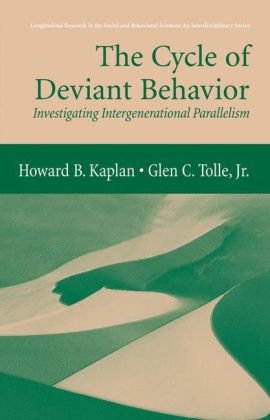

Most ebook files are in PDF format, so you can easily read them using various software such as Foxit Reader or directly on the Google Chrome browser.
Some ebook files are released by publishers in other formats such as .awz, .mobi, .epub, .fb2, etc. You may need to install specific software to read these formats on mobile/PC, such as Calibre.
Please read the tutorial at this link: https://ebookbell.com/faq
We offer FREE conversion to the popular formats you request; however, this may take some time. Therefore, right after payment, please email us, and we will try to provide the service as quickly as possible.
For some exceptional file formats or broken links (if any), please refrain from opening any disputes. Instead, email us first, and we will try to assist within a maximum of 6 hours.
EbookBell Team

5.0
38 reviews
ISBN 10: 038732643X
ISBN 13: 9780387326436
Author: Howard B Kaplan, Glen C Tolle Jr
This volume is about understanding the relationship between deviance and selected correlates of deviance in one generation and deviance and its selected correlates in the next generation. By examining the significance of these constructs in the parental generation as part of the explanation for the same constructs in the child’s generation, we contribute to an und- standing of the phenomena. This contribution, however, is quite limited in the sense that we are examining in essence bivariate relationships—the association between first-generation and second-generation phenomena— while ignoring all of the other influences on the second-generation p- nomena that do not stem from or account for the intergenerational relationship. Nevertheless, the study of intergenerational parallelism of deviance and its correlates justifiably has excited attention and resulted in a vo- minous literature greater than might have been expected for any parti- lar bivariate relationships because of the mystique surrounding ideas—cycle of violence, reproduction of culture, to name but a few—that are evoked by consideration of the association between such phenomena in one generation and the same phenomena in a successive generation.
Part I THEORETICAL AND METHODOLOGICALISSUES IN THE STUDY OFINTERGENERATIONAL PARALLELISM OFDEVIANCE
1 Toward an Understanding ofIntergenerational Parallelism ofDeviance
Defining Deviance and Intergenerational Parallelism
The Nature of Deviance
Intergenerational Parallelism
Guiding Theoretical Framework
Diversity of Explanatory Frameworks
An Integrative Theory of Deviant Behavior
The Integrative Theory and Other Deviance Theories
Applying an Integrative Theory
2 Method
Methodological Limitations of Current Research
Comparable Developmental Stages
Prospective Longitudinal Studies
Mediators, Common Antecedents, Moderators
Independent Sources of Data
A Multigeneration Prospective Study
Data Collection
Missing Data
Variable Construction
Variable Nonnormality
Statistical Methods and Latent Variable Model Estimation
Multigroup Analysis
Part II THE CONDITIONAL NATURE OFINTERGENERATIONAL PARALLELISM
3 Observing IntergenerationalParallelism in Deviance
Literature on Intergenerational Parallelism
Correlates of Deviant Behavior
Deviant Patterns
Estimates of Intergenerational Parallelism
Deviant Behavior
Disposition to Deviance
Negative Self-Feelings
Discussion
4 Moderators of IntergenerationalParallelism
Research Literature on Moderators
General Issues
Specific Intergenerational Relationships
Summary
Estimating Moderators of Intergenerational Parallelism
Deviant Behavior
Disposition to Deviance
Negative Self-Feelings
Part III DECOMPOSING INTERGENERATIONALPARALLELISM
5 Intervening Processes
Literature on Intervening Processes
Correlates of Deviant Behavior
Deviant Behavior
Structural Equation Models
Disposition to Deviance
Negative Self-Feelings
Summary
Deviant Behavior
6 Intergenerational Continuity ofIntragenerational Causes of DeviantBehavior and Its Correlates
Literature on Intergenerational Continuities ofIntragenerational Causes
Parenting Patterns
Socioeconomic Status
Explaining Intergenerational Parallelism of Deviance:Intergenerational Stability of Intragenerationa
Deviant Behavior
Disposition to Deviance
Negative Self-Feelings
Summary
Part IV RETROSPECT AND PROSPECT
7 Summary and Conclusions
Substantive Findings
Deviant Behavior
Disposition to Deviance
Negative Self-Feelings
Future Elaboration
Sociodemographic Controls
Bidirectional Effects
Meaning of Measurement Models
Genetic Influences
Parent Reports
Sociohistorical Trends
Range of Variables
Inclusive Models
Conclusion
References
Index
cycle of deviance
deviant cycle diagram
deviant cycle
what is the definition of deviant behavior
deviant behavior characteristics
a deviant behavior
Tags: Howard B Kaplan, Glen C Tolle Jr, Cycle, Deviant